Many busy people get through their days with the help of snack bars. And why not? They’re convenient, small, light, and easy to eat one-handed without ending up with stains all over your clothes. And they can deliver a bunch of calories in a dense, tasty bundle.
The recent popularity of food bars has been fueled partly by a growing wellness trend among many consumers looking for healthier snack choices.
If I were the kind of writer who’d make a pun for cheap laughs, I might say that they’re trying to “raise the bar.”
(Don’t worry — that’s my last “bar” joke. Bar none. That bar is closed. I’ve barred the door.)
The thing is, though, not all snack bars are created equal. Some offer genuine nutritional benefits (including boosting energy, increasing protein intake, or delivering specific nutrients), while others are little more than glorified candy bars.
Clever marketing can fool most consumers into thinking that highly processed food bars loaded with added sugar, saturated fat, and artificial ingredients are health foods.
The question becomes, how can you tell what’s good for you, and what’s not?
In this article, we’ll explore various types of snack food bars, identify the ingredients to look for and avoid, and expose common pitfalls.
Plus, we’ll show you how to make your own nutritious snack bars at home. Not only will you enjoy a healthier, more affordable alternative without any unwanted additives, but you’ll also save a bunch of money — maybe enough to buy a gold bar!
What Are Snack Bars?
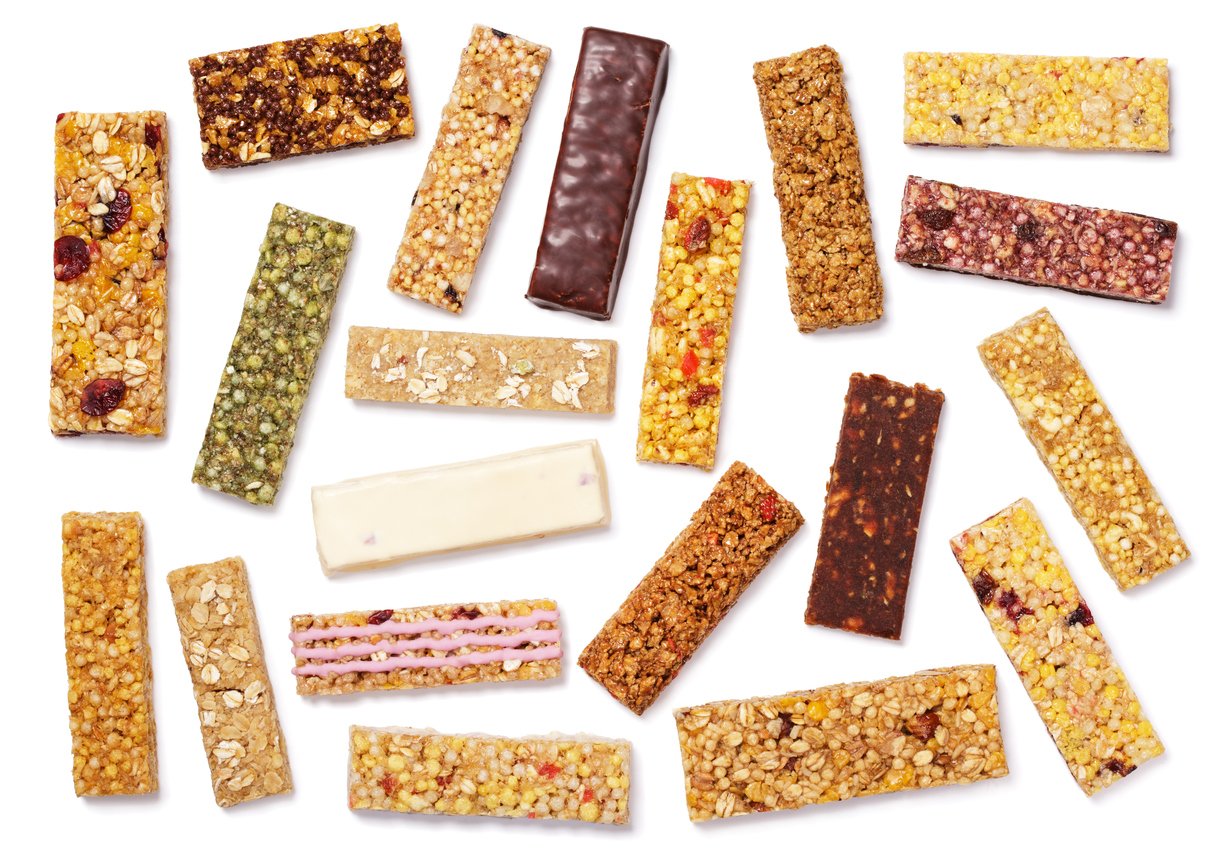
Snack bars are convenient, portable bar-shaped foods that provide supplemental nutrition between meals. Most store-bought bars are processed, although some may be considered minimally processed if there are only a few whole food ingredients.
There are many different types of snack food bars:
- Protein Bars: Higher in protein, these bars support muscle recovery and promote satiety. They typically source the protein from powders made of plant or animal sources.
- Energy Bars: Designed for quick energy boosts and replenishment, often used by athletes and hikers. They sometimes contain stimulants like caffeine, yerba maté, or green tea, as well as nootropics (“brain boosters”) like L-theanine and maca root.
- Meal Replacement Bars: More calorie-dense and nutrient-rich, these bars are formulated to substitute for a small meal.
- Weight Loss Bars: These are generally lower in calories than other types, and may contain appetite suppressants.
- Nutrition Bars: Convenient, portable, bar-shaped snack foods that provide additional nutrition outside of meals. They may include nutrient-dense “superfoods” such as acai, chia, or spirulina.
Many of these snack food bars target specific markets or diets, including vegan, vegetarian, Paleo, keto, organic, gluten-free, and raw.
Snack bars can also vary widely in nutritional quality. The best of them can offer meaningful health benefits and might earn a place in a high-quality, whole foods diet.
The Benefits of a Well-Made Nutrition Bar
The big benefit of nutritionally sound bars is convenience. They’re designed to be “grab and go,” meaning they’re individually packaged, portable, relatively non-perishable, and preparation-free.
They can be helpful when you need a quick and easy meal or snack, don’t have the time, resources, or energy to whip up a “real” meal, and don’t want to spend time or money at a restaurant or supermarket hot bar.
Because they tend to be low in water, snack bars pack a lot of calories per weight and volume, making them convenient for backpacks, purses, pocketbooks, briefcases, fanny packs, shoulder bags, and however else people are schlepping their stuff around these days. They can also be great to have on hikes or other outings.
Truly nutritious food bars can also assist with satiety, filling you up with relatively good stuff so you don’t reach for junk food made up of empty calories. They can also provide a physiological and psychological energy boost to pick you up when your body begs for a nap, but your schedule demands total focus (or at least verticality).
Food bars can help you sustain energy throughout your day by balancing macronutrients: healthy fats, protein, carbohydrates, and fiber. They can also be useful as a pre-exercise “fill’er up” or post-workout nutrient replenishment so your muscles have the raw ingredients to rebuild after you’ve torn them down.
The healthiest bars feature nutrient-dense whole food ingredients to provide balanced nutrition that your body recognizes as food. Nuts, seeds, and dried fruits provide macronutrients, as well as micronutrients such as vitamins, minerals, and antioxidants. Some, like protein bars and diet-specific bars, are formulated to meet specific nutritional needs, too.
How to Tell if a Food Bar Is Healthy

Given the vast difference in how healthy different snack bars are, it’s important to become bar literate so you can pass the “healthy bar exam.” (Please, stop me before I pun again!)
The main elements of healthy food bars are whole food ingredients. Since ingredient labels list items in weight order from most to least, pay special attention to the first few ingredients on the list. Look for things like nuts, seeds, dried fruit (which isn’t a 100% whole food since the water’s gone, but pretty close), rolled oats, puffed quinoa, and so on.
If they’re sweetened, look for natural sweeteners such as dried fruit, dates, maple syrup, or honey. Dates are often ideal because they are a whole food high in fiber and provide natural sweetness.
You may also want to check for quality assurance seals, such as Certified Organic or Non-GMO Project, for cleaner ingredients.
One thing not to pay attention to is marketing language describing how great the product is. For example, “natural,” “all-natural,” and “wholesome” have no actual meaning, and may be attempts at either “health-washing” or “green-washing” the food item.
Finally, focus less on terms that say what isn’t in the food (sugar-free, fat-free, gluten-free, pun-free, etc.) and more on what is in them.
(If you want tips for reading labels and understanding what they mean, check out our guide: How to Read Food Labels: Your Complete Consumer Guide.)
What ingredients might you want to avoid in snack bars? Here are a few red flags to watch out for:
- Added sugars and artificial sweeteners
- Preservatives and unnecessary additives, flavorings, and colorings
- Processed protein isolates
- Eggs, dairy, and other animal-derived ingredients
The Healthiest Snack Bar Is Homemade
Why are homemade bars the best? Because you have complete control over the ingredients you include, you can set your own quality standards. That means whole ingredients, no preservatives or highly processed foods, and low sugar content.
Also, homemade bars can be much more affordable than store-bought options with similar ingredients. And although buying is more convenient than making your own, you can stack the deck in your favor by making bars in bulk and freezing what you don’t use right away.
Finally, you can customize your bars to fit your dietary and flavor preferences. If a blueberry-chocolate-peanut-butter-soursop-jalapeño-oat bar is your thing, no one’s gonna stop you!
There’s a simple formula for making your own food bars:
- Base: nuts, seeds, dried fruit, oats, puffed quinoa, etc.
- Binders: dates and date paste, nut butter, maple syrup (discover the best sweeteners here)
- Flavorings: vanilla, salt, spices
- Add-ins: cacao nibs, protein powder, greens and green powders, coconut flakes, etc.
Homemade Nutrition Bar Recipes
Homemade nutritional snack bars are a simple, satisfying way to enjoy snacks that are as nourishing as they are convenient. Unlike many store-bought options, these DIY bars are made with wholesome ingredients that offer a balanced blend of plant-based protein, fiber, and healthy fats — all without the excess sugar or preservatives.
Whether you’re looking for an energizing pre-workout bite or a midday pick-me-up, these food bar recipes make it easy to stay fueled with real food you can feel good about.
1. Morning Energy Breakfast Bars
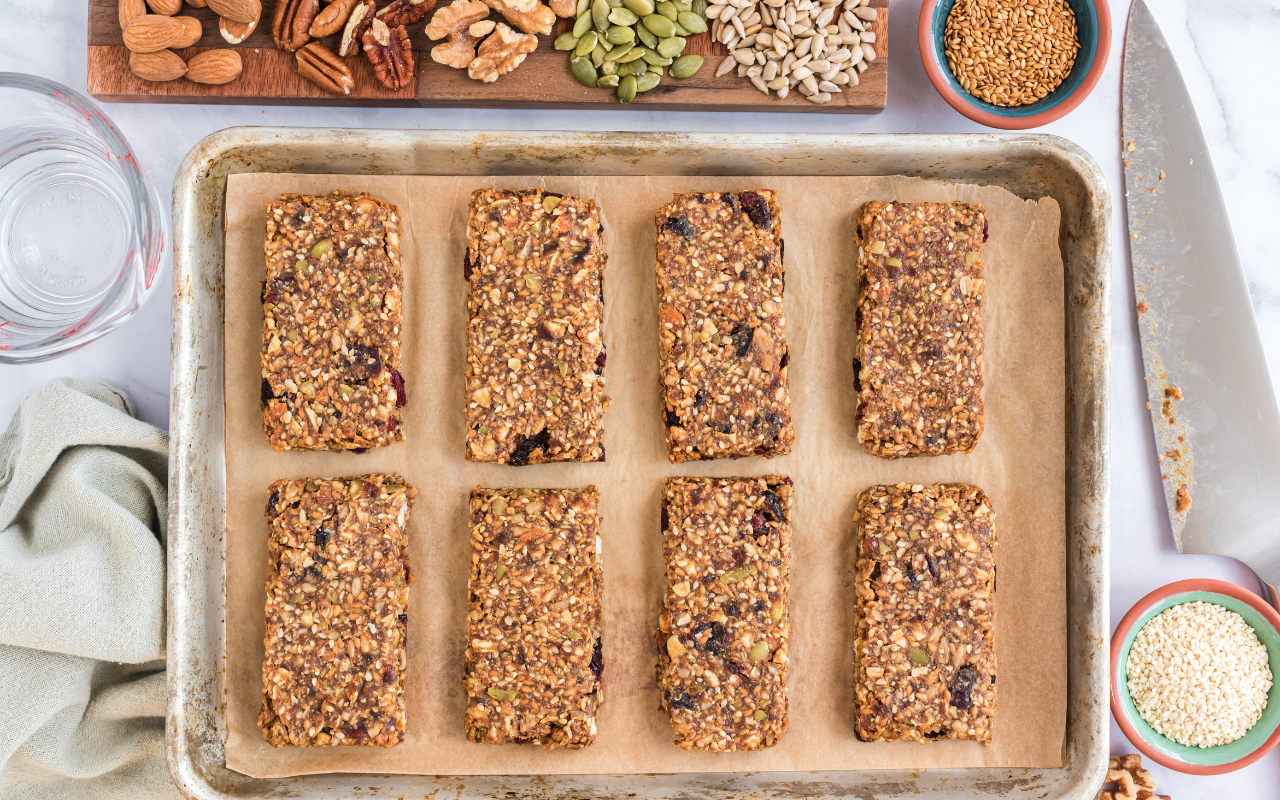
There is no shortage of get-up-and-go power with these nutty Morning Energy Breakfast Bars. This wholesome blend of almonds, pecans, walnuts, pumpkin seeds, sunflower seeds, flaxseeds, and sesame seeds provides the ideal amount of supercharged nutrients such as calcium, magnesium, zinc, iron, copper, protein, omega-3s, and some seriously satisfying crunch. Kissed with just the right sweetness, these homemade treats are the perfect breakfast or snack. Make them ahead of time so they’re ready to go for busy days!
2. No-Bake Nut and Seed Bars
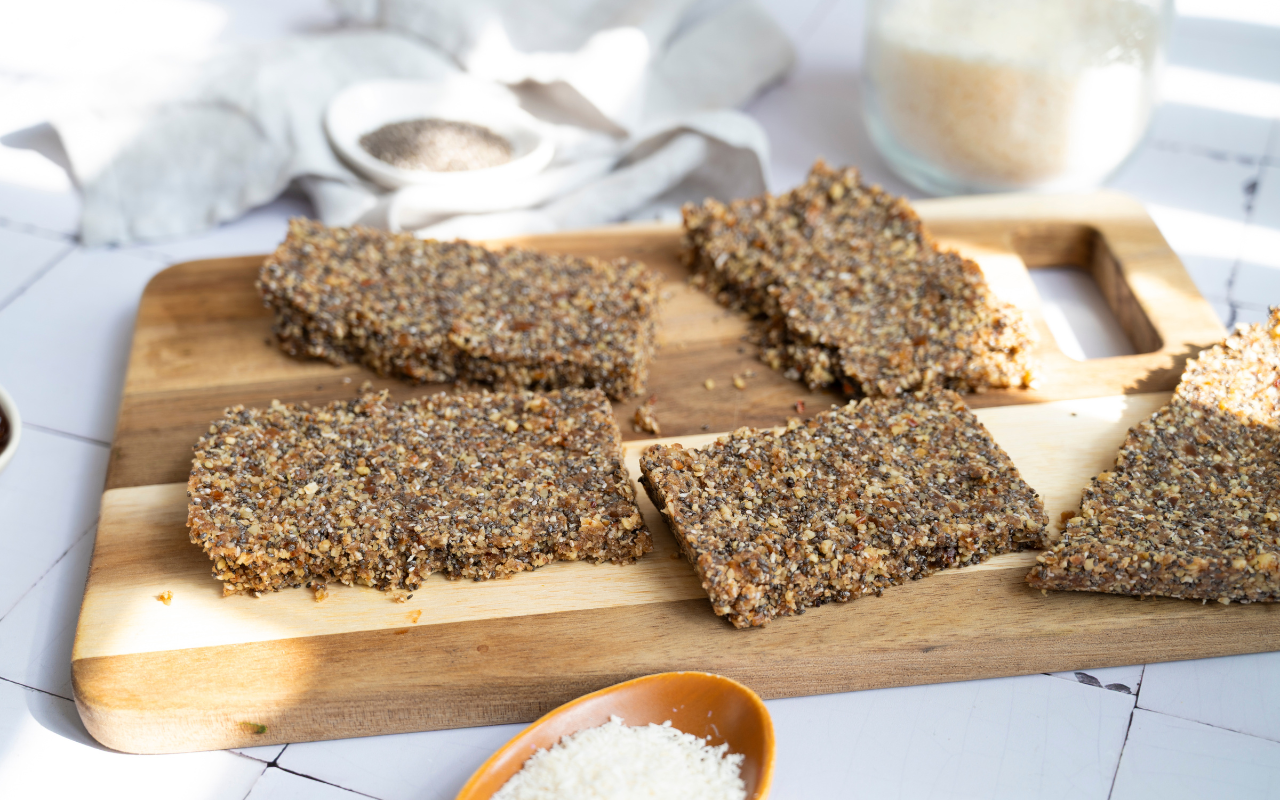
These No-Bake Nut and Seed Bars are a perfect example of how easy it can be to make healthy, homemade snacks that are both nourishing and convenient. Naturally sweetened and made with fiber-rich, heart-healthy ingredients, they offer lasting energy without the additives found in many store-bought options. With no baking required, they come together in minutes and make a simple, satisfying snack you can feel good about all week long.
3. Apricot Cashew Butter Energy Bars
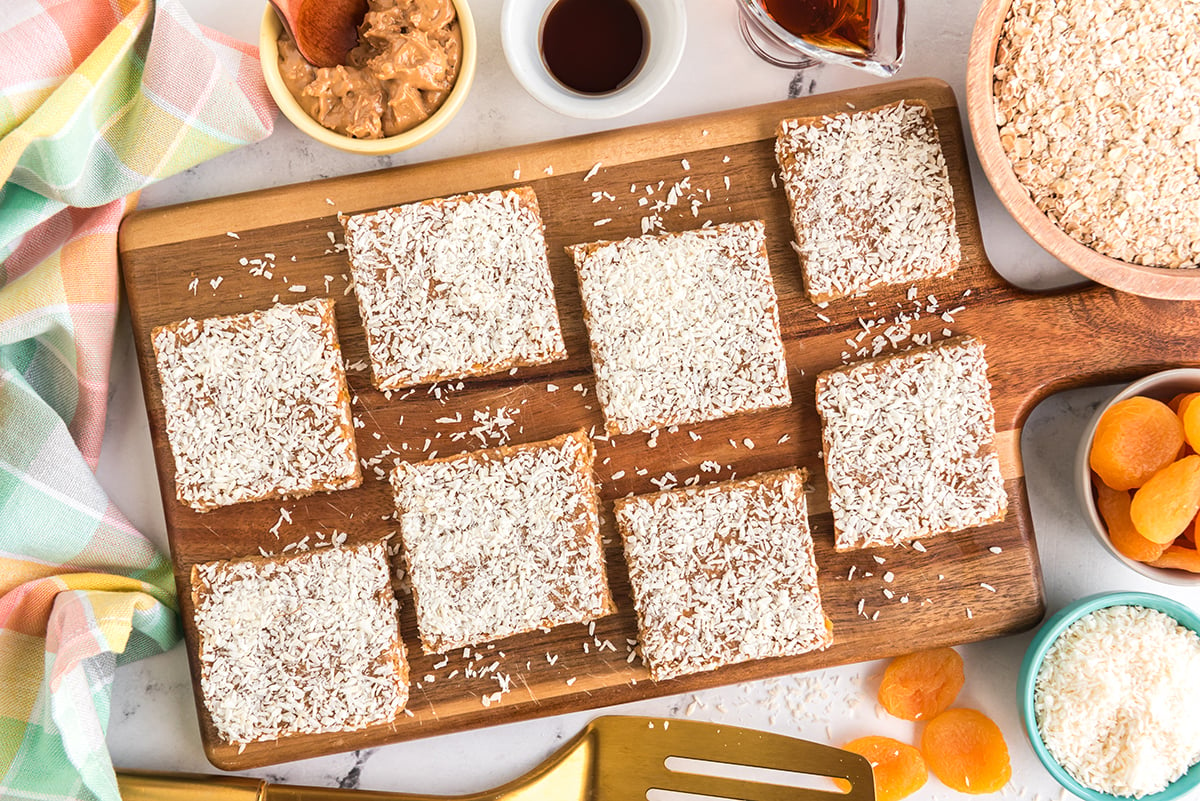
These Apricot Cashew Butter Energy Bars have a soft, almost cookie-like texture and a naturally fruity punch. Blending pantry staples is a great option when you want something nourishing but a little more out-of-the-box than your average bar. The sweet-tart apricot pairs beautifully with the creamy cashew butter for a snack that feels both indulgent and energizing — perfect for when you need a little lift.
4. Crispy Quinoa and Goji Berry Bars
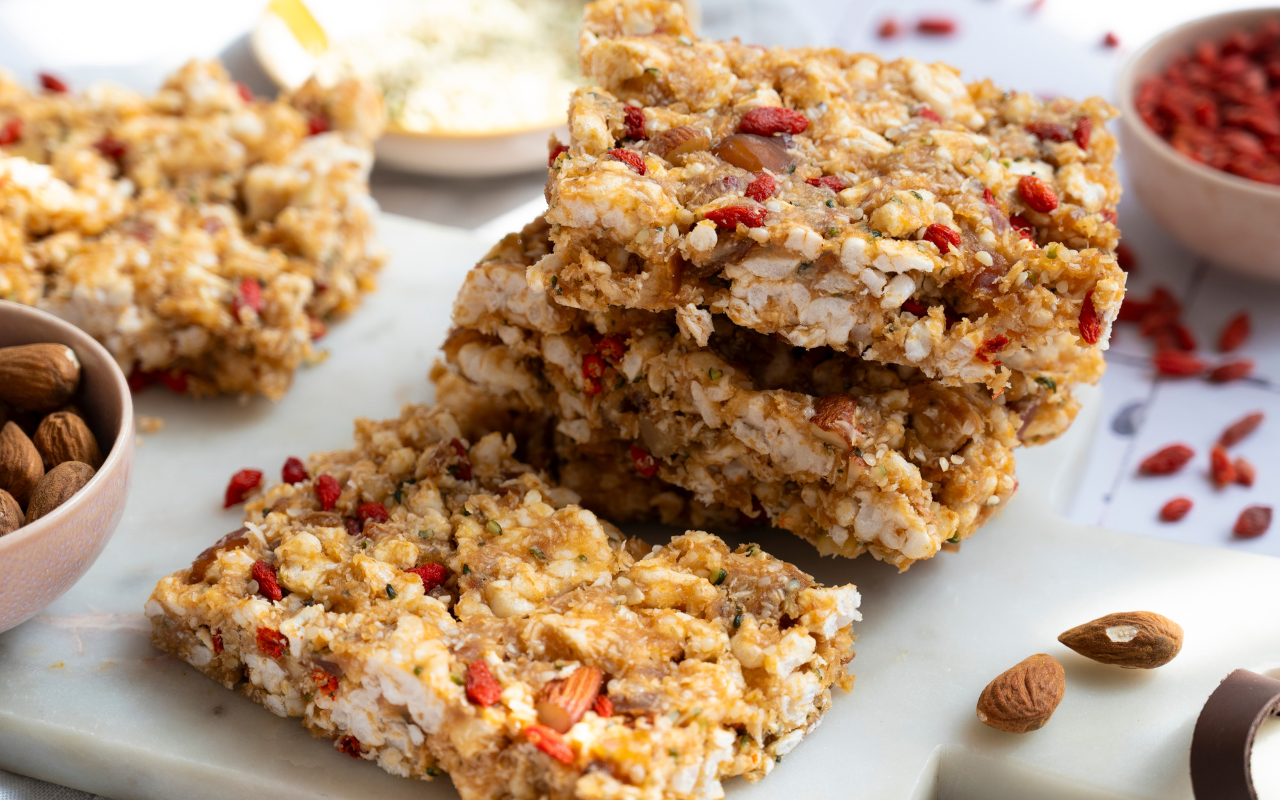
Crispy, lightly sweet, and packed with texture, these Quinoa Goji Berry Bars are a standout option for homemade snacking. Made with nutrient-dense ingredients like quinoa puffs, hemp seeds, and goji berries, they deliver a satisfying crunch and a hint of natural sweetness. Ideal for batch prep, these bars strike a thoughtful balance between function and flavor — perfect for powering through the day without relying on store-bought options.
5. Pumpkin Pecan Granola Bars
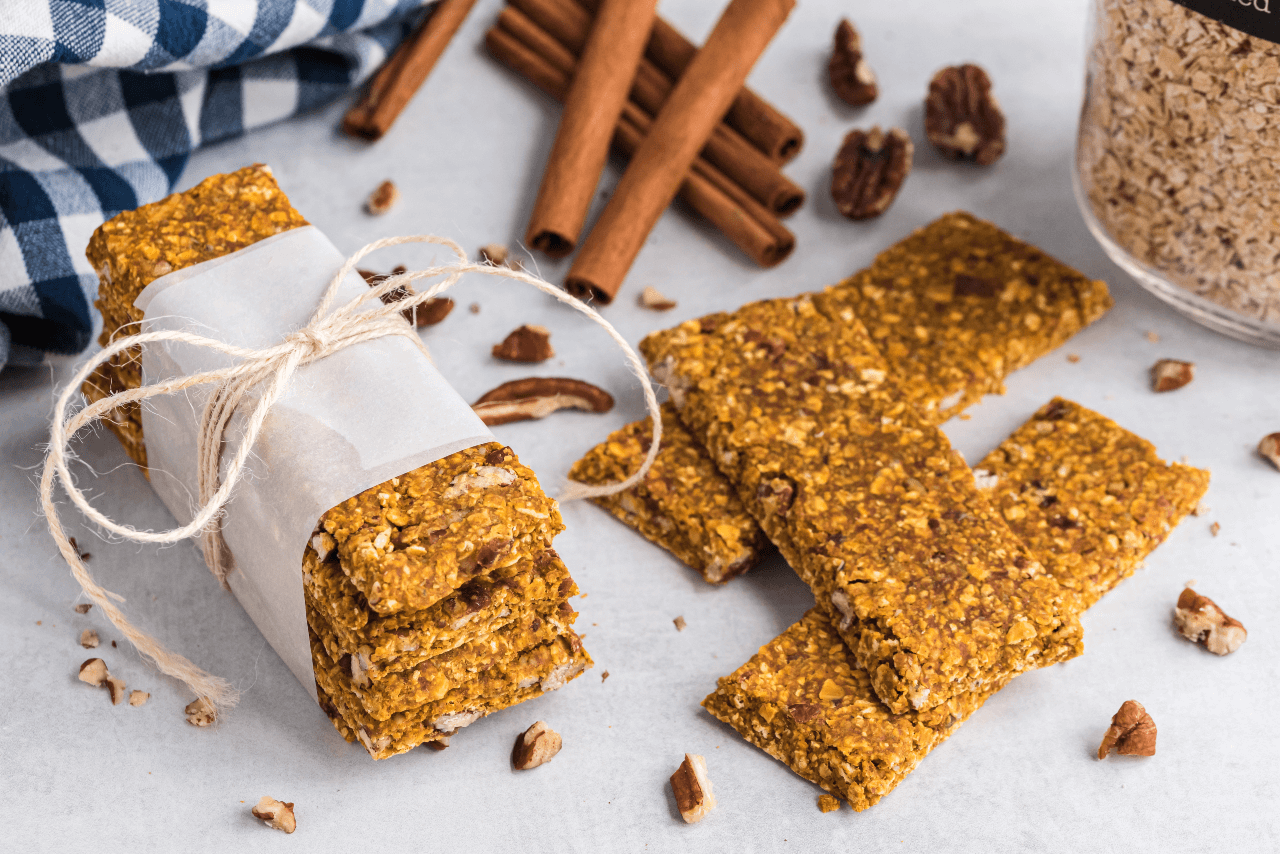
These Pumpkin Pecan Granola Bars are a no-bake snack that feels like a slice of autumn — cozy, spiced, and naturally sweet. The combination of pumpkin, dates, and warm spices makes them comforting, while pecans and hemp seeds add crunch and staying power. They’re easy to prep and perfect for fall-inspired snacking anytime. Want a sturdier texture? Pop them in the dehydrator for a firmer, travel-friendly bar.
How To Store Snack Food Bars
Because one of the main reasons to buy or make snack bars is to have them handy before you’re too hungry to make good decisions, you’ll want to know how to store them so they’re fresh and yummy when it’s time to take a bite.
Store homemade bars in an airtight container in your fridge (for up to 2 weeks) or freezer (up to 3 months). I recommend glass containers so you can see how many you have left and start preparing the next batch before you run out.
Most store-bought bars are shelf-stable. By law, they must have an expiration date, but depending on the brand and ingredients, they might last well past that date. On the other hand, if you’ve waited three years to unwrap it, maybe it was never destined to be a part of your routine, and you should find one you like better.
Some store-bought snack bars need to be refrigerated for optimal taste and texture, so be sure to read the label. If the bar is refrigerated at the store, it probably wants to receive the same treatment at home.
Choose Your Food Bars Wisely

As the demand for on-the-go, nutritious snacks grows, so does the variety of options available. But while some nutrition bars provide genuine health benefits, others are loaded with added sugars, artificial ingredients, and misleading health claims. Understanding how to read ingredient labels and identify truly nutritious bars is key to making the healthiest choice.
The best nutrition bars are those made with whole-food ingredients. And while there are some great store-bought options, making your snack and protein bars at home is often the healthiest, most affordable, and customizable alternative.
Editor’s Note: If you’re looking for a truly nutritious, ready-to-eat snack bar, Good Thinking Foods’ Fruit & Veggie Bars are a standout. Each bar delivers a half cup of organic fruit, a half cup of leafy greens, a half cup of colorful vegetables, 10 grams of nuts, and a nourishing blend of seeds and grains — with zero added sugar or sweeteners. It’s a simple, delicious, and effective way to boost your fruit and veggie intake, especially when you’re on the go. Click here to learn more and take advantage of an exclusive discount for FRN readers.
If you make a purchase through that link, Good Thinking Foods will contribute a portion of the proceeds to support Food Revolution Network’s mission. (Thank you!)
Tell us in the comments:
- Do you have a favorite food bar?
- Have you ever made your own healthy snack bar?
Featured image: istock.com/jenifoto

